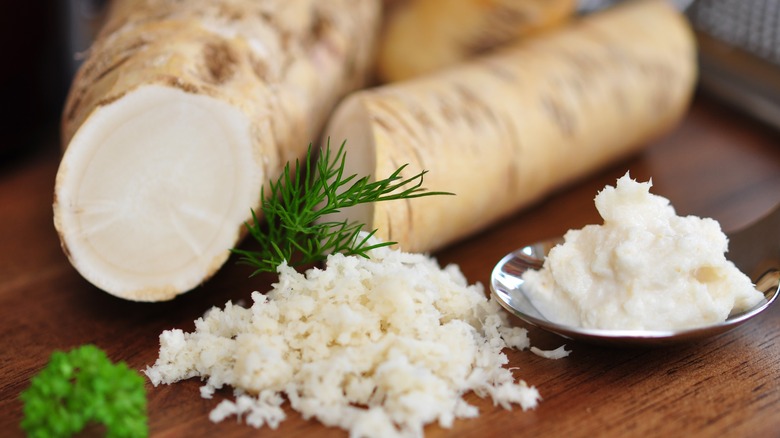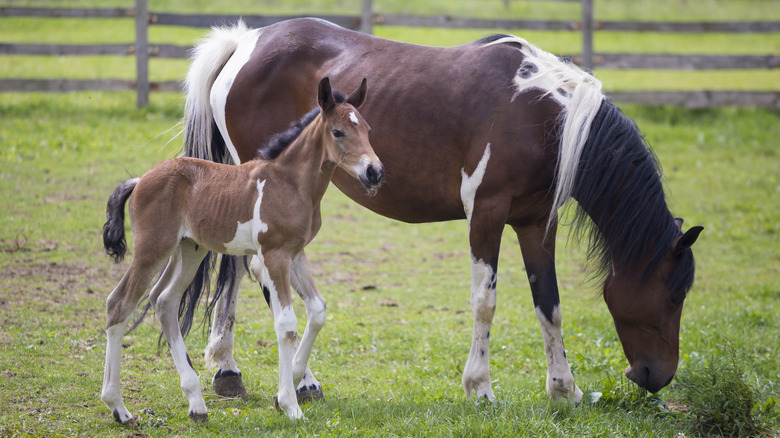What Does Horseradish Have To Do With Horses, Anyway?
Horseradish, both the sauce and the root from which it is made, is known for its strong and pungent flavor. It comes as little surprise, then, to learn that it was first used for medicinal purposes. Around 3500 years ago, give or take a century, the ancient Greeks used it for back pain and also as an aphrodisiac. In Biblical times it was also employed for religious purposes and today remains a part of Passover celebrations. By the late Renaissance, certain cutting-edge cooks caught on to the fact that horseradish can taste pretty good if used in the right culinary context, and by the 17th century it was not uncommon for Europeans to use it with roast meat. Bottled horseradish sauce — specifically, the Heinz brand — dates to the mid-19th century.
Throughout its long history, though, the one thing horseradish was not used for was to feed horses since the stuff is actually toxic for livestock. So why, then, is the plant named for the equines who cannot consume it? One kind of racy theory is that the root may be said to resemble a stallion's, er, male bodily parts. Not to be neigh-sayers, but that may be a bit of a stretch (no off-color meaning intended here).
The more likely stories behind the name are somewhat less colorful
Another, more PG theory behind how horseradish came to be known by this moniker involves its German name, which is Meerrettich. The "rettich" part simply means "radish," while "meer" is the German for "sea" so it's possible that the root may have been named because it often grows close to the coastline. The theory behind the English name involves the fact that "meer" and "mare" are false cognates, while a mare, of course, is a female horse. This line of reasoning is somewhat debunked, however, by the fact that there's no recorded history of any English language use of the word "mareradish" which could have been expected to predate a later evolution into the current, nongendered name.
The most likely etymology for the word horseradish seems to be the fact that "horse" was once used as an adjective that meant coarse, large, or strong. Traces of this meaning are present in the still-current idiom "strong as a horse." This ties in with the fact that there are other similarly-named plants including horsetail, horse chestnut, and horse nettle, all of which are also toxic so not the kinds of things that horses (or people) should be eating. They are, however, fairly sturdy, as is horseradish, which backs up the "horse as adjective" theory.

